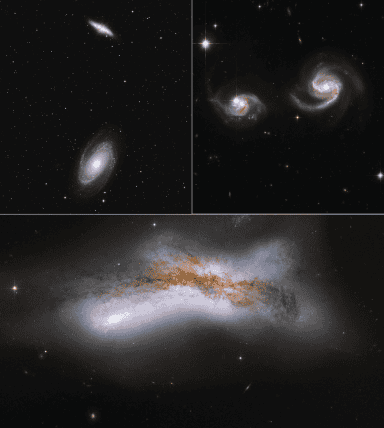Physicsworld
1M
391

Image Credit: Physicsworld
Andromeda galaxy may not collide with the Milky Way after all
- A century later, in 2012, astrophysicists at the Space Telescope Science Institute (STScI) predicted a collision between the Andromeda galaxy and the Milky Way in four billion years based on their motion towards each other.
- Using data from the Gaia astrometric mission, new modeling suggests a 50/50 chance of the collision happening or not, due to the gravitational effect of an additional galaxy, the Large Magellanic Cloud.
- The presence of the LMC may shift the collision trajectory, potentially turning a head-on collision into a near-miss, leading to uncertainties in the merger predictions.
- Proper motion of Andromeda is a critical factor, where a large enough combined transverse motion could avert a collision within the next 10 billion years.
- On the other hand, a smaller transverse motion could lead to a certain merger due to dynamical friction effects between galaxies.
- The ongoing challenge lies in accurately measuring Andromeda's proper motion, which is crucial in determining the likelihood of a collision with the Milky Way.
- Ambiguities in factors such as the LMC's mass estimate also contribute to uncertainties in the collision prediction.
- New data from ongoing analyses and observations are expected to provide clearer insights into the future trajectories of the galaxies, potentially reducing uncertainties in merger predictions.
- Even if a collision doesn't occur within the next 10 billion years, the possibility of a future merger between the Milky Way and Andromeda still remains, possibly taking tens of billions of years.
- Researchers suggest that additional data from ongoing studies could shed more light on the fate of the Milky Way and Andromeda galaxies in the coming years.
- The research findings are published in Nature Astronomy, highlighting the evolving understanding of the potential collision between the Andromeda galaxy and the Milky Way.
Read Full Article
23 Likes
For uninterrupted reading, download the app